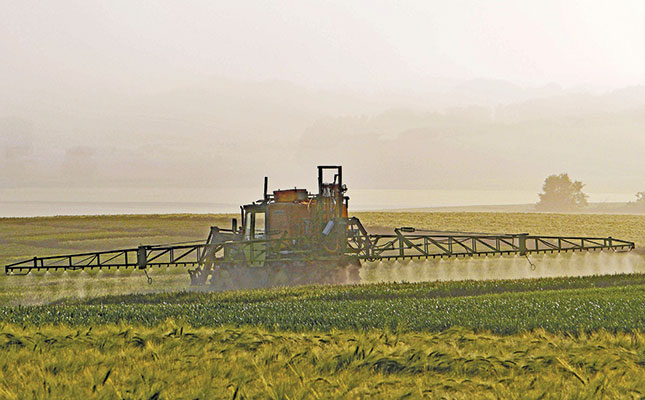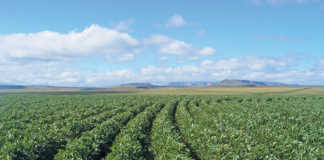
Photo: Pixabay
If farming is the most ancient occupation on the planet, then weeding definitely comes second, says Leonard Oberholzer, head of technology development and agronomy at Bayer Crop Science.
Speaking at a combined congress of soil, weed, horticulture and crop production societies earlier this year, Oberholzer outlined what the future of weed management might entail as farmers sought to employ new techniques in response to a fast-evolving challenge.
According to Oberholzer, the change from hand weeding to chemical control, especially in developing countries, is one of the factors driving so-called weed shifts. This is when the relative populations of weed species in an area change, particularly when some species are more susceptible to a herbicide and others are more tolerant of it. The latter grow in number at the expense of the former.
Population growth and agri production
Oberholzer points out that only about 3% of the world’s surface area is available to grow food.
The year 2050 is often used as a benchmark in discussions about projected population growth and the subsequent increase in demand for food. The global population, which is currently about 6,7 billion, could expand to 10 billion people by that year.
As a result, says Oberholzer, food production will have to double over the next three decades.
He also highlights the key global risks listed by role players at the World Economic Forum in terms of their potential impact and the likelihood that they will occur. Currently, the two greatest risks are extreme weather conditions, and climate change mitigation and adaptation.
Both, of course, are closely linked to agriculture and food production.
Oberholzer argues that globalisation and the drive to produce more food are creating a special set of weed control challenges due to the lack of diversity in control practices.
Farming has become big business, and a small number of large companies now dominate the field.
“Everyone is doing the same thing: same crops, same weed management. And there are not a lot of different modes of action.”
Globalisation also means that ‘superweeds’ are easily transported in grain shipments across the world.
“There are real dangers of importing superweeds into agricultural production in South Africa,” he says.
Repeated use, and sometimes abuse, of limited modes of action creates weeds that are resistant to certain herbicides.
In fact, through the misuse of chemical weed control products, farmers might inadvertently be selecting for resistance, as each plant that survives a round of herbicide treatment is likely to go on to produce offspring that stand an even better chance of surviving.
Creating superweeds
The adoption of glyphosate-tolerant crops by small-scale and subsistence farmers is another area that needs attention.
According to Oberholzer, greater education and awareness are necessary to prevent such farmers from relying exclusively on glyphosate to control weeds and thereby causing weeds to develop resistance to it.
The widespread use of this chemical control has already resulted in an alarming increase in the number of weeds with glyphosate resistance since 2000.
“We need to be careful of creating super-tolerant weeds that we can’t control,” he stresses.
The growing move to no-till or minimum-till production practices and certain conservation agriculture practices that rely heavily on chemical control also contribute to resistance and weed shifts.
Herbicide resistance is possibly one of the biggest threats for weed control in future.
“If we can’t control the growing resistance problem, by 2050 none of the current herbicides available to farmers will have any effect anymore,” says Oberholzer.
Of even greater concern, he adds, is the lack of new modes of action. Between 1950 and 1980, a new one was released every three years on average, but from the 1980s not a single new mode of action has been developed.
All current and new herbicides being developed are based on modes of action developed prior to the 1980s.
In addition, little is being done to address weed management problems in specialised horticultural crops such as vegetables.
“Companies are not investing enough money [in research] and this is going to become a real danger,” he says.
High-tech war on weeds
Substantial work, however, is being carried out in gene technology, genetic engineering and related fields, and Oberholzer believes these will contribute significantly to combating resistance.
There is even potential to reverse the resistance that weeds have built up, and create future generations that are once more susceptible to herbicides.
Even more noteworthy is the idea that weeds can be bred to lose their resistance to herbicides. This is being explored through the use of tools such as CRISP-R to genetically alter resistant weed populations to produce susceptible generations.
“We can then change entire populations of resistant weeds back to populations susceptible to the herbicide,” he says.
Robots as weeders
Genetic engineering is just one approach. Other interventions highlighted by Oberholzer relate to precision and digital agriculture and include tools already available, such as variable application of herbicides.
Others are almost futuristic developments, such as the Robovator, which relies on machine vision to control weeds in row crops mechanically.
According to the website robovator.com, this robot is equipped with a plant detection camera above each row. It then carries out ‘intelligent weeding’ with a mechanical tool operated by hydraulic power.
The Robovator, a trailed implement, remains effective even if the tractor itself drifts off course, avoiding crop plants and targeting only weeds. It moves its weeding tool rapidly out of the row when passing a crop plant.
The Robovator also employs thermal weed control technology.
It can be adapted to work on systems of up to 31 rows and is reported as being both easy to use and affordable. It can be operated using a smartphone and other devices.
GPS-based technology and tools such as hyperspectral imaging are also opening up new possibilities. Bayer, for example, is starting to rely on hyperspectral imaging acquired via a camera affixed to a drone.
“The camera then does the population count for us. We don’t have to go there [to trial fields] and do the count by hand anymore,” says Oberholzer.
Innovations such as these will be needed to reach nutrition goals in Africa, he stresses.
There is also significant potential in biological control of weeds. This ranges from use of biological products to control weeds, to selecting crops that can actually outperform weeds, or using hybrids.
Constant connectivity
Oberholzer says that concepts such as big data, the Internet of Things and connection to the cloud will feature in future weed control. The use of wearable technology, such as a smart watch, will also continue to grow, evolving into even further digital interconnectedness.
“We now need to figure out how we’ll connect this to weed management.”
Out-of-the-box thinking will be needed. For example, apps are available where a farmer can take a photograph of a weed and obtain instant identification as well as the coordinates. By the end of the season, users have built up a map of where the disease is occurring in South Africa.
“The same thing can also happen with weeds,” says Oberholzer.
South African farmers will have to make more use of the many technological resources available to fight weeds. Fortunately, these are becoming increasingly more affordable.
Email Leonard Oberholzer at [email protected], or phone him on 082 773 0308.











